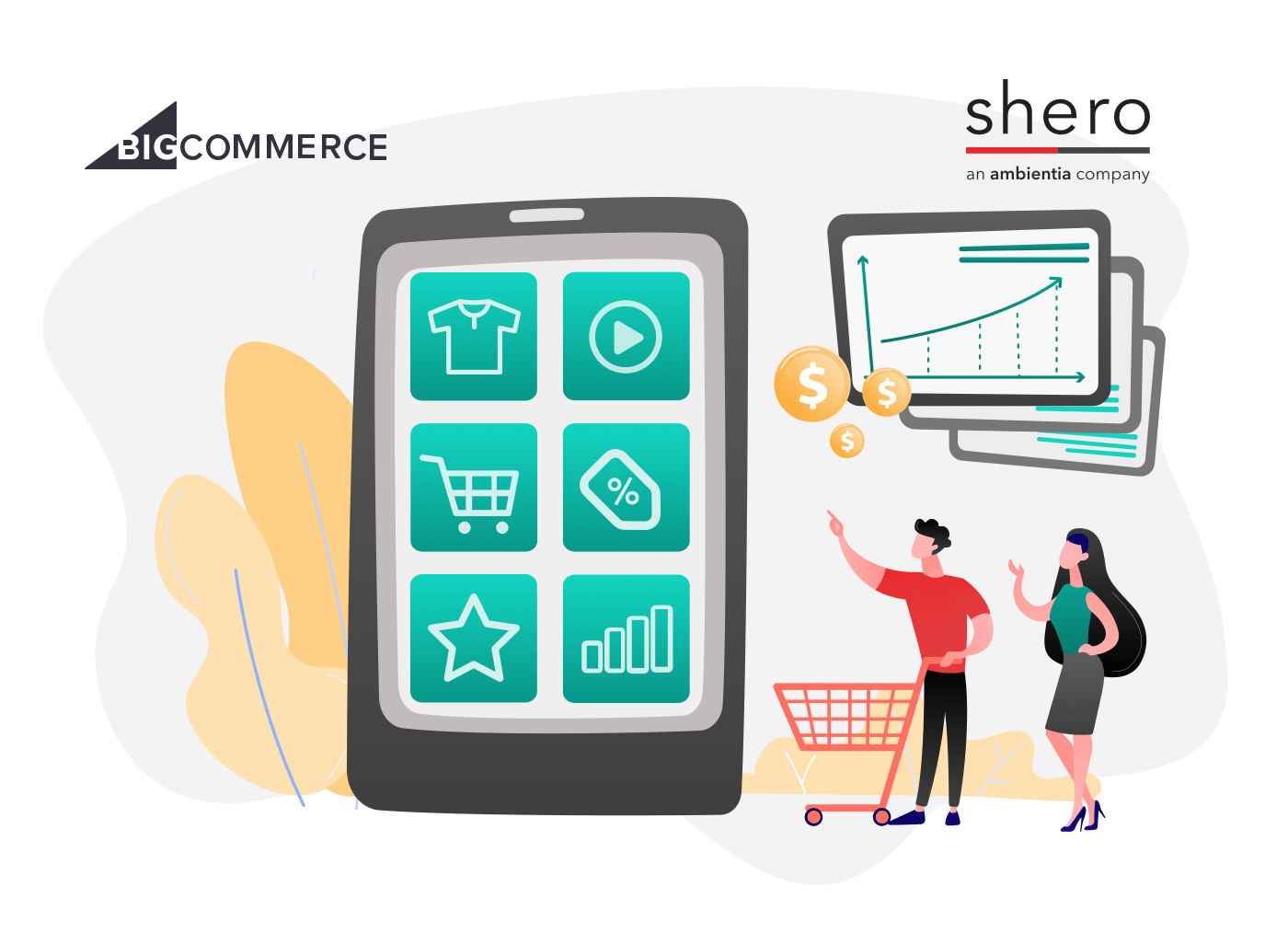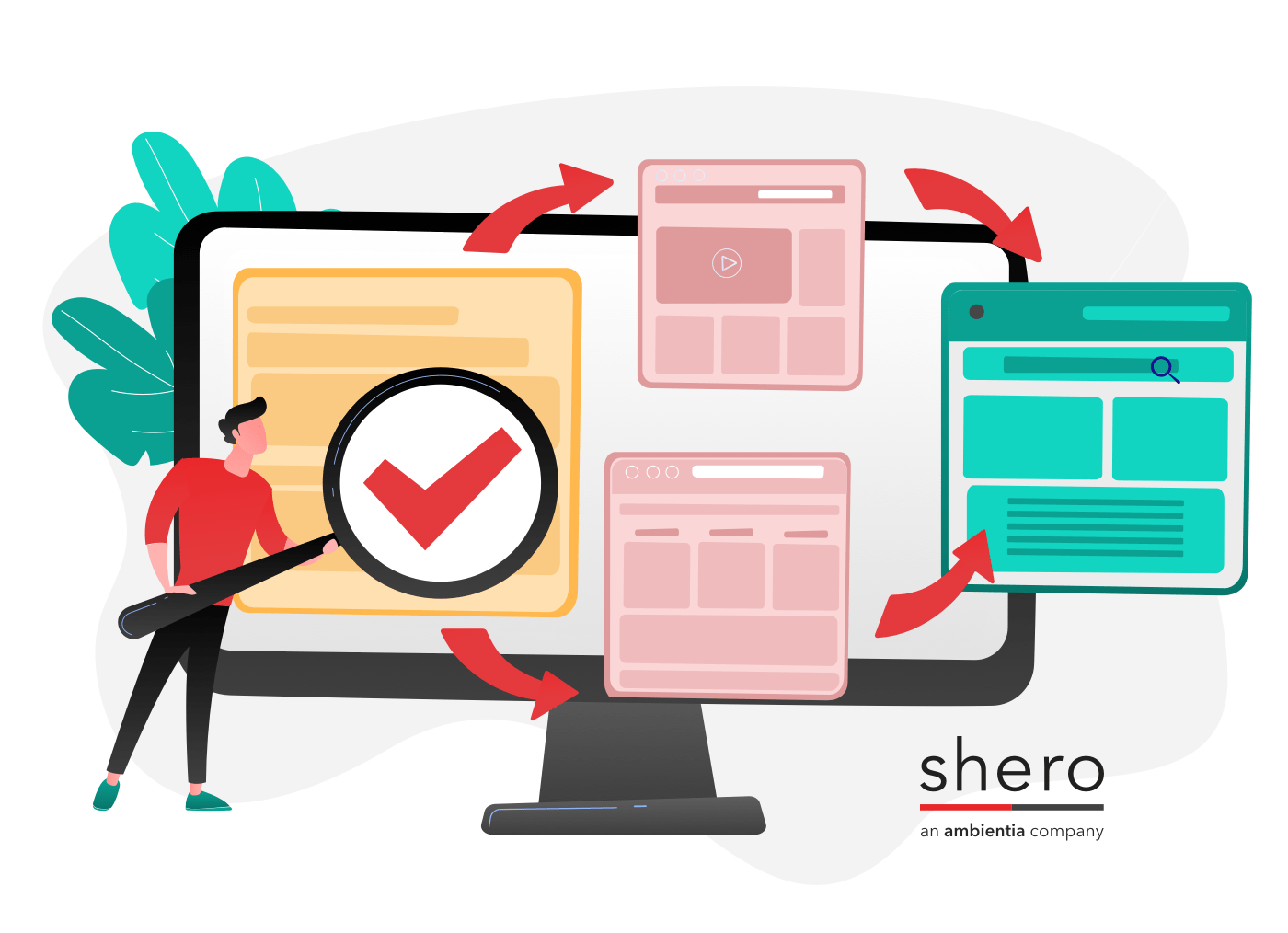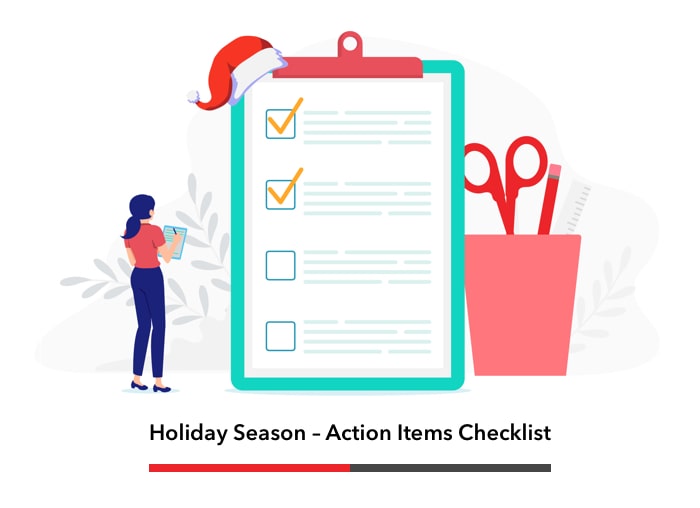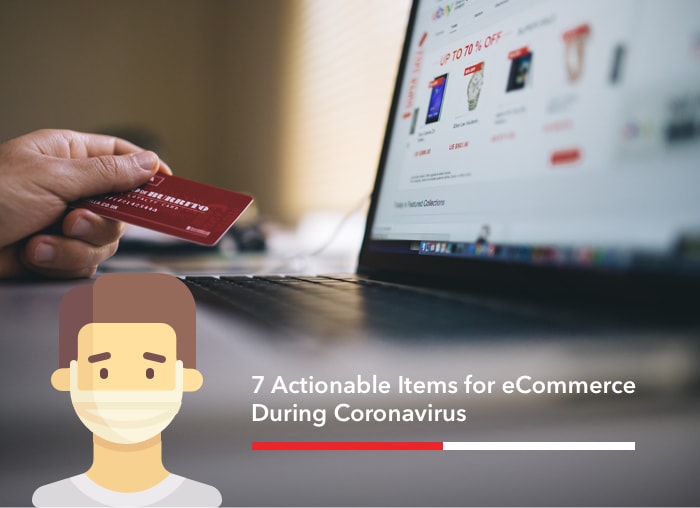Customer experience (CX) is absolutely critical to growing your online business. While a positive CX can increase sales, customer retention, and brand reputation, a negative experience can knock the wind out of your sails (and sales).
Every aspect of your eCommerce store can be improved, and it’d be nearly impossible to list them all.
But there are several specific ways to improve customer experience at checkout, and we’ll dive into those here, with the help of Tristan Oker, agency partner manager at ShipperHQ.
First, let’s start with the basics.
What is Customer Experience
To understand customer experience, put yourself in the customer’s shoes.
Today’s shopper expects an easy, in-and-out experience—or, a simple browsing experience to easily peruse products. At the end of their shopping session, they want a smooth, fast, and easy checkout experience.
CX is how a customer interprets their experience with your brand. Is your website speed up to par? Are your products easy to find and displayed well? Or is your store outdated, and it’s time to upgrade or replatform?
With so much competition in the online retail world—and with that number steadily increasing thanks to pandemic-related industry growth—good first impressions don’t just matter, they’re crucial.
How Important is Customer Experience
According to Tristan: “Shipping is a third of what you do as an eCommerce merchant. Its one-third getting a customer to your store (marketing/advertising), one-third providing great products that are easily accessible, and one third shipping and checkout.
The unifying theme that ties all of these together is a great customer experience.
If you drop the CX ball at any of these stages then there can be drastic negative impacts on your conversion rate.”
5 Ways to Increase Customer Experience at Checkout
Here are five ways to get a better CX, explained in detail in the video below.
- Appropriate shipping methods
- In-store pickup availability
- Accurate shipping rates in checkout
- Accurate dimensions of products and boxes
- Enhanced checkout — a ShipperHQ speciality
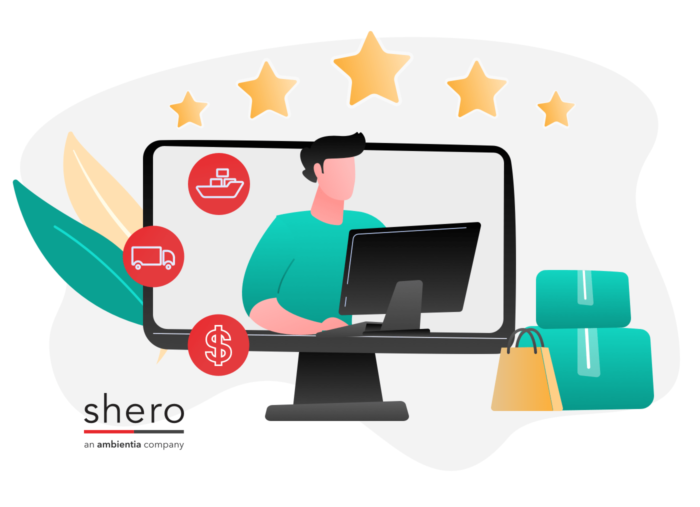
Edited Transcript:
Tristen Oker, agency partner manager at ShipperHQ joined us for a virtual chat to share his “5 Top Tips For Creating a Better CX at Checkout” which can help your store increase conversions.
To jump right in…
What are the top five ways you think eCommerce stores can improve their customer experience?
1. Appropriate shipping methods
Make sure that your customer has the appropriate shipping methods at checkout. Make it easy for them. You don’t want to have a whole bunch of methods that don’t apply to them, like worldwide express if it’s just a local customer, or in-store pickup options for customers 1,000 miles away.
Or, say, you’re selling lobsters in Maine and you know you have a perishable product—you want to make sure that a customer in Washington, clear across the country, isn’t able to select a ground shipping option.
If the product somehow ships and the customer receives a big sloppy mess of lobster days later, that’s horrible CX.
But even if you catch that checkout mistake before you send the product, you’ll have to reach back out to the customer, tell them they picked the wrong option, then pay more for an expedited option—it puts a bad taste in the customer’s mouth.
Take full control in the checkout and make it easy for the customer. They should see the shipping options that are applicable to them based on where they are or what’s in the cart.
2. In-store pickup availability
So as we’ve seen with Covid times, many businesses that typically didn’t have an online presence rushed to go online so they could support customers and sell to their locals with an option to have pickup in the checkout.
And so with that, there are a few things to keep in mind.
When you’re offering an in-store pickup option in checkout, it’s great to build trust and loyalty and face-time with your local customers—but you’ll want to set up some sort of parameters for the most part around when that options going to show.
For instance, when the customer’s at checkout and they punch in their zip code, you might want to set up a 100-200 mile radius so that it only appears when that customer is in that range.
Otherwise, sometimes a customer will quickly just see a free shipping option and select that, without realizing it’s for pickup when they live across the country.
Alternatively, if you are a destination company like a winery, maybe you do want to have it on at all times, for that customer who wants to buy a few bottles of wine because they’re flying to town on vacation and want to enjoy them on a picnic.
[Patrick] Online sales of perishable goods have been fast-tracked in the past year or two. We have a shared client who sells seafood online, so we definitely understand the importance of having the correct shipping methods populating, but we can take it even more granular than that with different shipping options for different items in the cart.
For instance, say a customer is buying a bottle of wine and a lobster, the wine can ship over a week but that lobster you’ll want to get to them as quickly as possible.
We’re excited to see more of those kinds of businesses who were previously excluded from eCommerce stepping into eComm and taking advantage of a whole new sales channel.
[Tristan] It’s true. We see a lot of small, local mom and pop shops go online and suddenly their business explodes because someone across the country loves them and visited them once, but now can access their goods.
3. Accurate shipping rates in checkout
This is probably common knowledge but it’s really tough to be able to display those accurate rates if you’re transferring the cost to customers, so you want to make sure that you have not only all of your products dimensions put into your SKU catalog so those can be pulled into checkout and accurately rated on.
But also you want to make sure you’re not over- or under-charging customers. If you do either one of those, you’re probably either losing a customer because shipping is too expensive, or you’re losing money.
Accurate shipping rates in checkout is crucial, especially when offering multiple shipping methods.
4. Accurate dimensions of products and boxes
To get the most accurate rates, note the dimensions of all of your products as well as the dimensions of the boxes you’re shipping them in most often.
The reason: Shipping companies use dimensional weight which is not only the weight, but also the space that the box takes up on the truck.
So, if you’re shipping really oblong, oversized, weirdly shaped things or items that are large and light like popcorn tins, globes, fishing rods, fencing swords, or others, then you want to make sure you’re taking all of those dimensions into account. I guarantee the shipping companies are taking those into account and they’ll let you know in the invoice they send.
5. Enhanced checkout — a ShipperHQ speciality
So we’re talking about customer experience, but included within this is customer expectation.
Customers have a higher expectation of shipping in the checkout mainly because Amazon has really reinvented shipping. Now you can chose whether a preferred shipping method for each item in your single order.
Essentially, that’s what ShipperHQ’s Enhanced Checkout does. We give the Amazon-style checkout experience. We’re essentially able to show splits in the shipment when there’s multiple-origin, or if an order must go another way.
If the customer’s order is coming in multiple shipments, you’ll want to show that on checkout.
It enhances CX because it allows the customer to see the progression of deliveries. One this week, one next week, and so on.
That’s essentially what enhanced checkout does—it allows for those splits to be shown in the checkout, and really helps with messaging as well as conversions.
So, you don’t only have the ability to show when those splits are coming from multiple origins, but you can also set those up in a way that allows for different rules to be applied.
For instance, LTL shipments that must go freight, can be ordered right alongside your small parcel shipments that have to go FedEx or UPS.
[Patrick] It allows you to set parameters when applicable, but also gives shoppers options.
For example, if you’re buying clothing online you want a specific shirt for a party the next night, you can set it to ship sooner and allow the rest to come later. It provides a better customer experience, keeping the price-point down because they don’t have to expedite the whole order.
[Tristan] Another example: Our mutual client that sells those perishable seafood products like lobster, also sells stock items like rubs and spices that go along with cooking those dishes.
A cooking package with fish, spice, an apron, an oven mitt—those have drastically different shipping requirements.
The lobster must go overnight and will be there within 24-48 hours, whereas the rest can go ground; you can give the option to go overnight, but it’s not necessary.
From a merchant standpoint, you want to set up those types of rules. Being able to show those customers that orders are coming in multiple shipments, and having ability to have full control over which products go which method, you could also have customers checkout with preorder or out-of-stock items, right alongside in-stock items.
Usually you’re not able to do this. If you’re out of stock, the customer typically journey ends right there at the product page.
With Enhanced Checkout, you can show that the in-stock item will be this Friday, whereas the preorder arrives in weeks.
Could you share more about ShipperHQ and exactly what you do as a service?
So here are some of ShipperHQ’s main advanced features.
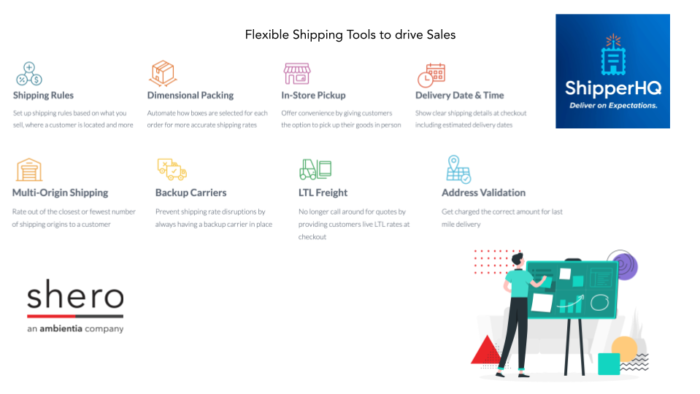
A lot of merchants use ShipperHQ for various requirements including surcharging, discounted shipping, restrictions, and more.
Then we dive into their needs—are you losing money on shipping? Is there rate discrepancy between what you charge customers and what FedEx or UPS is charging you? And that’s when we figure out dimensional packaging.
This helps with aligning accurate shipping rates but also helps to save some time and money for the merchant. This gives the customer the best rate possible.
Then we discuss whether in-store pickup is right for them, and streamlining delivery dates in the checkout. If you don’t have suggested delivery dates in checkout, you might be missing out on a lot of conversions.
ShipperHQ deals with a whole host of carriers domestically and internationally, from small parcel, to LTL, to white-glove in-house delivery.
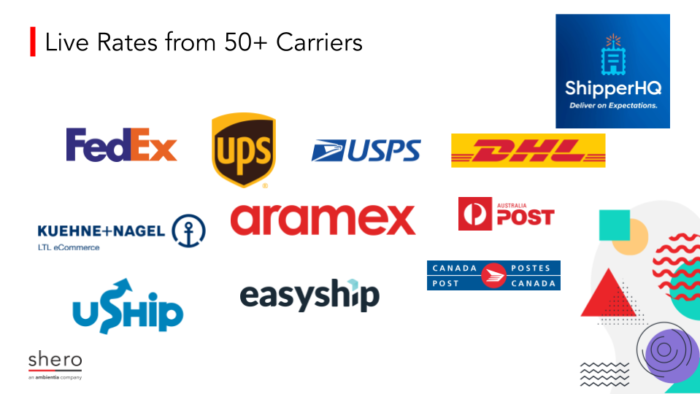
And you really can’t talk enough about enhanced checkout.
It offers that split checkout. In the example below, you can either select express for the teeshirt or ground for the pair of shoes. It gives a much greater customer experience than they’re expecting from merchants every day.
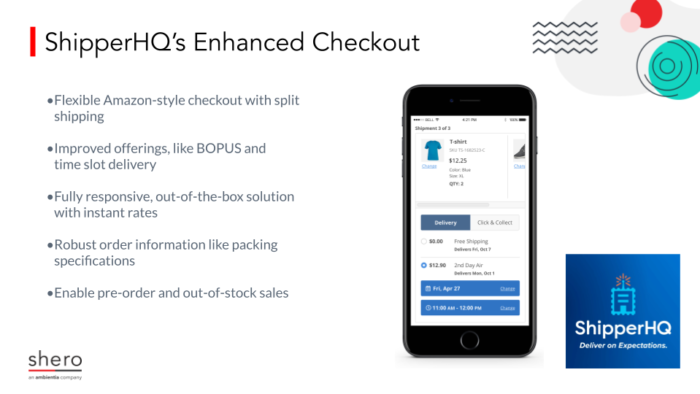
We have merchants from mom and pops new to eCommerce all the way to Fortune 500 and multinational companies. Some have very complex setups with warehouses, duties and taxes, complex shipping requirements. Or different regulatory requirements because of dangerous goods.
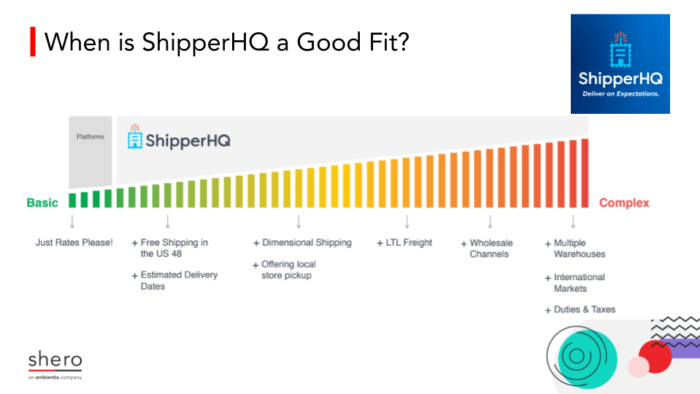
If you’re just trying to get rates and add in a couple of shipping rules, we have an option. Or if you’re looking for a true shipping consultant who can make sense eCommerce shipping, we’re there for you.
We have years and years of experience and a really good connections. If we don’t have the answer, we’ll find it for you.
For more information, visit ShipperHQ.com
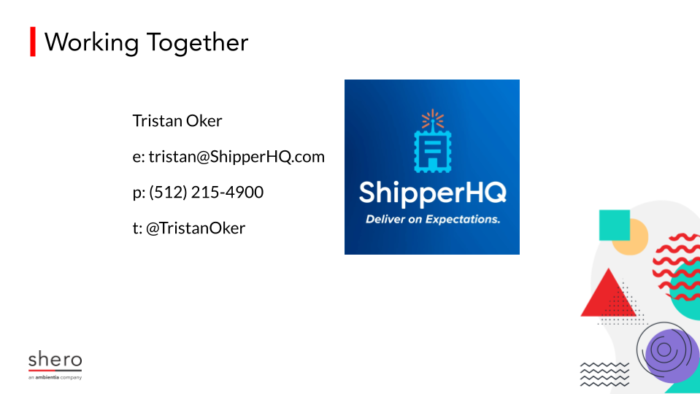
In Conclusion
There’s a lot to shipping and there’s a lot of money to be saved by doing it correctly. And, plenty of opportunities to improve customer experience.
Learn more about building or migrating your eCommerce store with Shero Commerce here.
Gentian, CSO and co-founder of Shero Commerce, guides the company and client digital strategies. He's an expert in technical SEO, Inbound Marketing, and eCommerce strategy.



